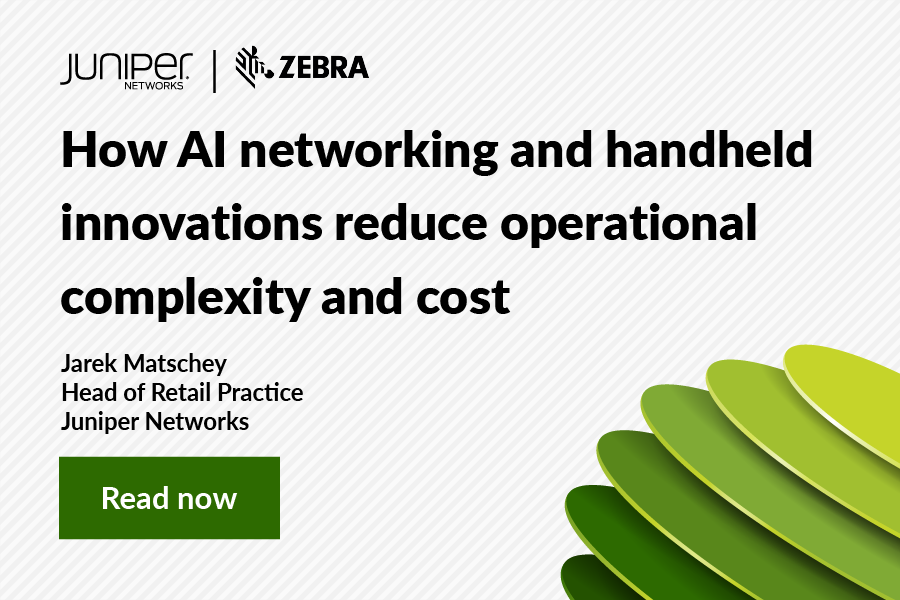In the fast-changing retail landscape, stores face new customer expectations, competitive business models and potentially complex technology requirements. To meet current demands, as well as those of the next normal and an unpredictable future, retailers are now adopting software-driven strategies to deliver connected retail experiences and operations, ultimately resulting in the software-defined store. In order to achieve this level of integration across the customer journey and all aspects of store operation, retailers need to embrace the use of open APIs with Experience-First Networking.
Leveraging Open APIs for a Connected Customer Experience
From new store workloads to applications that resonate with customers, an application programming interface (API) helps to deliver a reliable and rich store infrastructure. Bridging the gap between retailers and customers, APIs can be utilized to automate processes, give live updates as they happen and offer an enhanced experience at every stage of the customer journey.
For example, when a customer visits a store website and types a product into the search bar, the API will enable them to see results that show not just the relevant item but also availability in-store. Or if a store has an in-app promotion, the API ensures the customer receives the latest details while providing the retailer with information on their buying habits that can be used to create a more personalized experience.
“To achieve greater digitalization of the shopping experience, we needed an excellent network infrastructure. A Juniper network enables us to deliver that experience.”
– Simon Drees, Director of Omnichannel Services and Innovations, Outletcity Metzingen
When APIs send information to another platform or application, they can provide the right format for that service or toolset to use. Sharing data between different systems in this way helps retailers with both initial deployment of a new service and ongoing operations, for example by providing actionable insight into customer footfall or security issues.
Reducing Security Risk and Accelerating Technology Adoption
Juniper Mist™ uses a combination of artificial intelligence, machine learning and data science techniques to optimize user experiences and simplify operations across the wireless access, wired access and SD-WAN domains. Juniper’s AI-driven network pushes notifications when there is a security risk, automatically raising an alert to the problem and creating a service ticket.
Using the built-in API, the network sends a downloadable packet capture (all of the data relating to the risk or incident) to all of the relevant team members using Slack, ServiceNow and other tools. This enables IT operations to react faster and address security risks more swiftly.
In fact, Juniper enables IT teams to take action with the simple click of a button. For example, if there’s a cybersecurity issue, the IT team can take the affected website offline with a single click by hitting the red button. Disconnection can be instant or require approval, depending on company policy. Once the changes have been made and approved by the cybersecurity team, the website can quickly go back online with a single click of the green button. All changes are tracked, including what was added, what was removed and who instigated the request.
The seamless connectivity benefits of APIs are often discussed in terms of data exchange, yet they also offer the advantage of allowing retail staff to adopt new technology without spending time learning how to use new tools, reading lengthy manuals or participating in training. As the API facilitates controlled access to the relevant data being shared by two applications or platforms, logging into a separate interface is not required. This experience-first networking makes the user experience straightforward and familiar.
Automating Initial Deployment and Reducing Human Risk
By reusing existing data and simply passing it from one data source to another, deployment is quicker than before. For example, if a retailer needs to deploy systems in one hundred new stores and those systems all need to be populated with data from a spreadsheet, there’s no longer a need for manual data entry. An API can read the data directly from the source file and push it to the relevant store system automatically.
With zero touch provisioning across the entire site, APIs have become key to supporting network agility and business growth. Using an API ensures accurate data is passed between sources, reducing the risk of human error.
Understanding Customer Traffic
Juniper Indoor Location Services are built into the wireless network and data gathered by the network can be shared with existing operational tools using open APIs. Like customer data, location data can be used to inform retail strategy through analysis of heat maps and customer journeys. From store information to customer buying habits, accurate and real-time insights benefit retailers at zero cost to the environment. Additionally, the ability to use an existing toolset to view the data saves retailers on staff training time and costs.
“We redesigned our in-store networks to enable new levels of retail innovation. The AI-driven Mist Platform provides stores with predictable, reliable, and measurable Wi-Fi.”
– Vishal Goradia, Senior Director of Networking and Technology, Gap Inc.
By enabling operational automation across any product, the Juniper AI-driven network acts as an extension to retail organizations. As an open-source network, it can be run in any environment without vendor lock-in. The AI-driven network can also communicate to open APIs. Juniper supports all vendors with an easy-to-use dashboard and is flexible to suit every type of retail operation.
Whether choosing to build in automation across operations, or simply making a few positive changes, retailers can rely on Juniper Networks portfolio to meet their constantly evolving requirements for the modern multi-channel retail experience.


